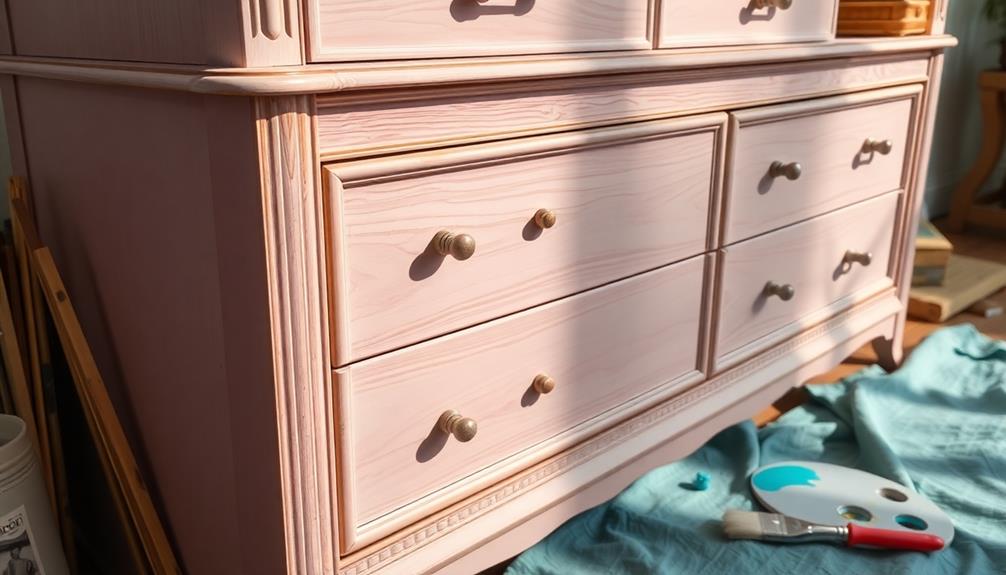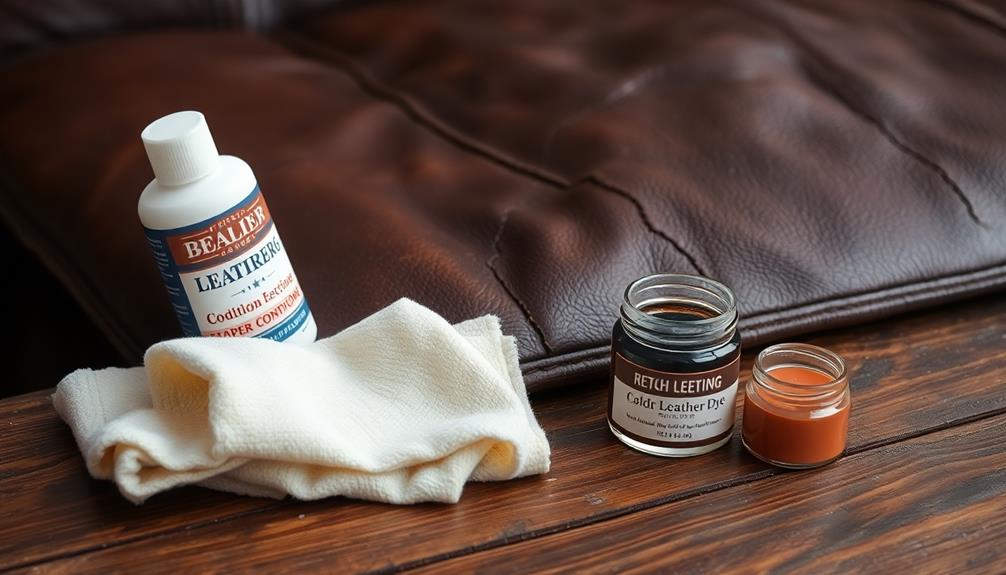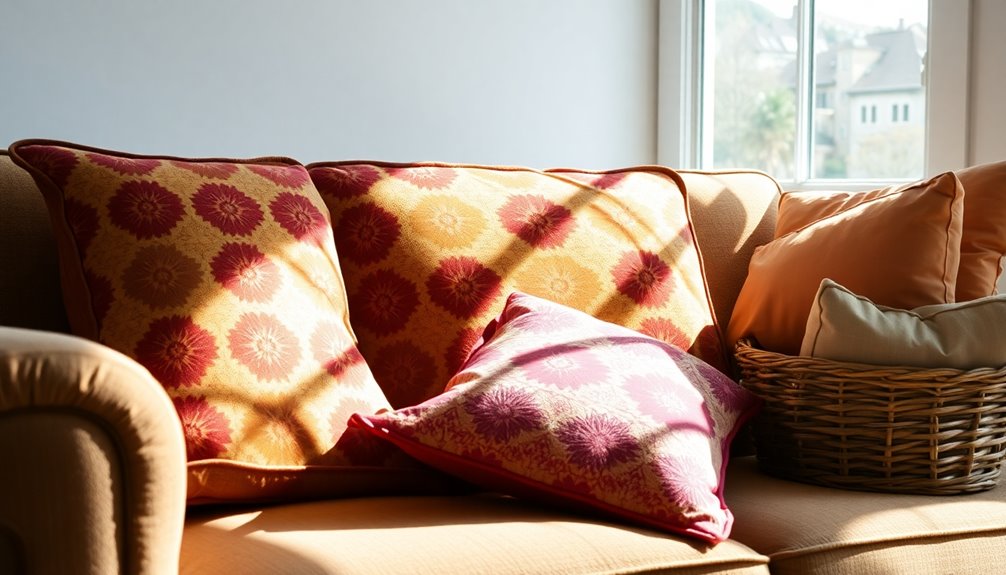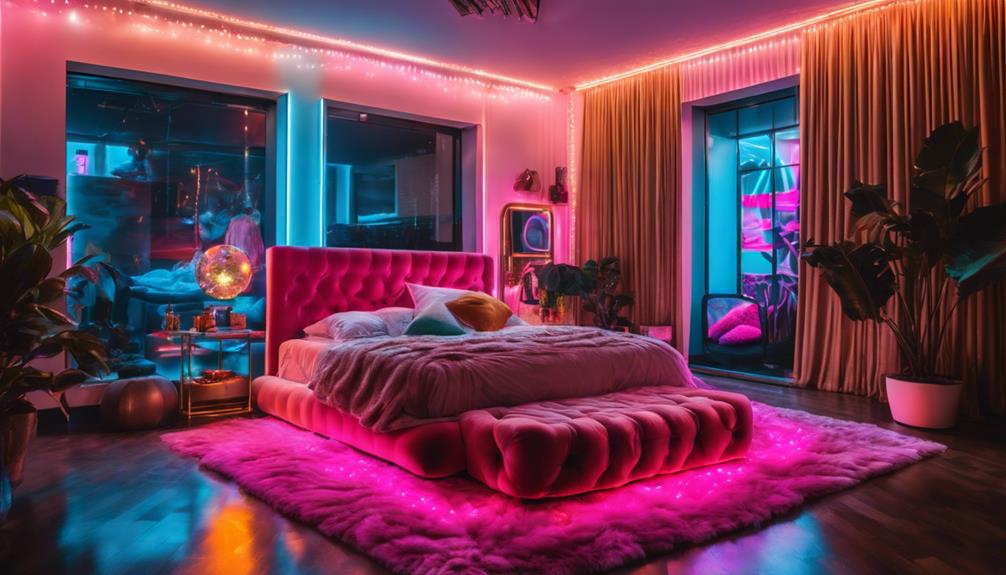You can easily enhance the look of your veneer furniture with the appropriate prep and painting methods. To start, clean it using warm water and a mild detergent to get rid of dust. Take off any hardware for a cleaner appearance. Gently sand the surface with low-grit sandpaper to improve adhesion. Apply a quality primer specifically made for veneer, such as an oil-based option. Once the primer is dry, apply high-quality chalk paint in thin layers, making sure each coat is completely dry before adding the next one. Finish off with a protective topcoat to increase durability. There is plenty more to discover about the top products and methods to take your project to the next level.
Key Takeaways
- Clean the veneer surface with warm water and mild detergent to remove dust and grease before painting.
- Lightly sand the veneer using low-grit sandpaper to improve paint adhesion.
- Apply a high-quality primer specifically designed for veneer to enhance durability and adhesion.
- Use chalk paint for excellent adhesion and a matte finish, applying two thin coats for an even result.
- Repair any cracks with wood glue and clamps before painting to ensure a smooth surface.
Understanding Veneer Furniture
Veneer furniture is a popular choice for many homeowners because it combines the beauty of real wood with cost-effectiveness. This type of furniture features a thin layer of genuine wood—typically less than 1/8 inch thick—bonded to a less expensive core material like particle board or MDF. The result is an aesthetically pleasing piece that captures the look of solid wood without breaking the bank.
Understanding the importance of budget management can help you make informed choices when investing in furniture.
While veneer beautifully showcases natural wood grain, it can be more vulnerable to scratches and damage compared to solid wood. Consequently, proper care and maintenance are essential to keep your furniture looking its best.
You'll also notice that the surface of veneer furniture is often smoother and shinier, enhancing its visual appeal.
Common uses for veneer include furniture, cabinetry, and paneling, allowing for diverse styles and finishes.
It's important to understand the differences between natural and engineered veneer. Natural veneer is sliced from real wood, while engineered veneer mimics wood grain patterns using synthetic materials. By knowing these distinctions, you can make informed decisions when selecting and caring for your veneer furniture.
Preparation Steps for Painting
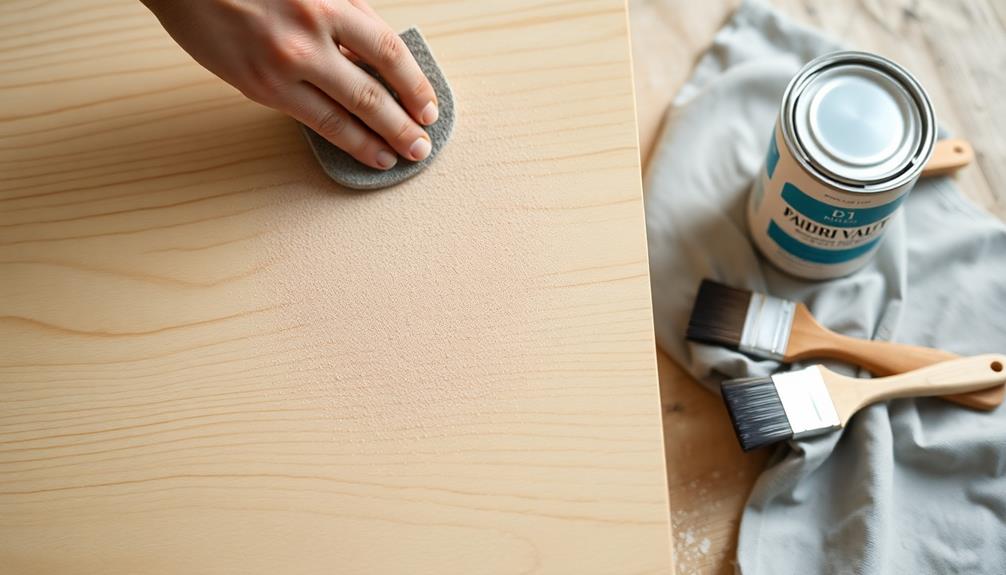
Before you start painting your veneer furniture, it's important to prepare the surface properly. Taking the time to prep can make a significant difference in the final result. Follow these essential steps to guarantee your project goes smoothly:
- Clean the furniture with warm water and mild detergent. This step is vital as it helps eliminate dust and grease that can interfere with adhesion, much like how regular maintenance can extend the lifespan of appliances, as seen in appliance maintenance plans.
- Remove all hardware, like knobs and hinges, for a cleaner finish.
- Lightly sand the surface using low-grit sandpaper.
- Apply a quality primer specifically designed for veneer.
- Check for any dust or debris before priming.
Start by cleaning the furniture thoroughly. This helps eliminate dust and grease that can interfere with adhesion.
Next, remove all hardware to avoid any interference during painting.
Once that's done, lightly sand the surface. This step creates a rough texture that enhances the adhesion of your primer and paint.
After sanding, make sure to wipe away any dust left behind.
Finally, apply a quality primer, guaranteeing even coverage with a brush or roller. Follow the manufacturer's instructions for drying time.
Painting Techniques and Tips
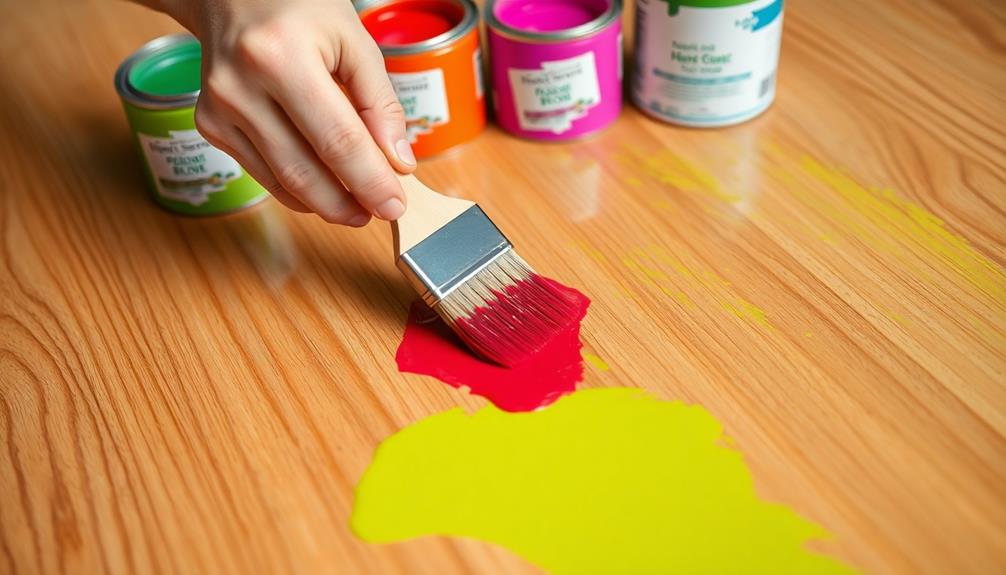
When you're ready to paint your veneer furniture, choosing the right techniques can make all the difference. First, verify the surface is clean and dust-free. You might want to lightly sand the veneer to improve paint adhesion, as this step reflects the importance of effective preparation in achieving desired outcomes.
After prepping, apply a high-quality primer specifically designed for veneer; this step enhances the durability and coverage of your paint.
For the actual painting, consider using chalk paint. It offers excellent adhesion properties and allows you to achieve a matte finish without extensive prep work.
When applying the paint, remember to apply two thin coats. This approach guarantees a smoother and more even finish. Allow each coat to dry completely before applying the next; this patience pays off.
Repairing Cracked Veneer
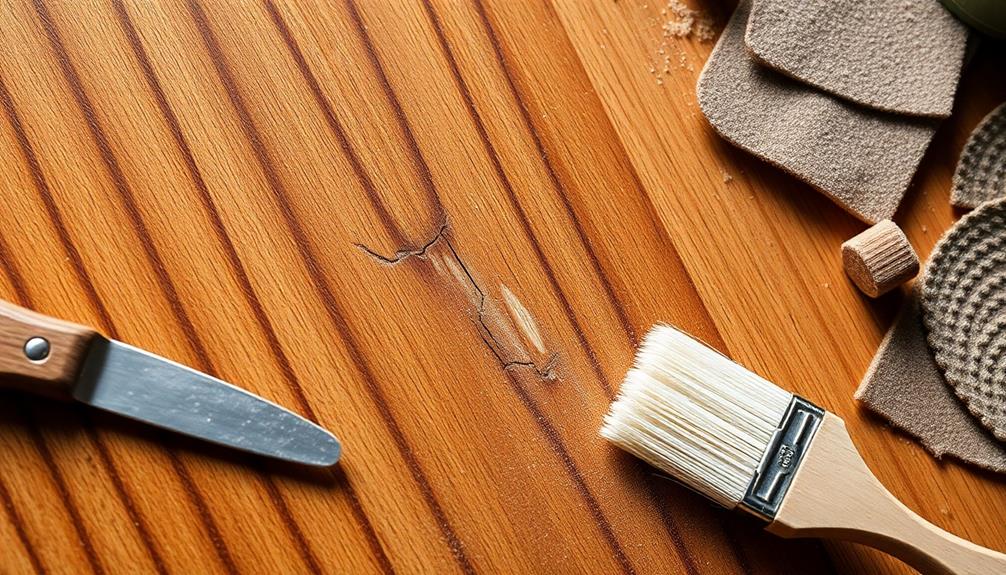
After successfully painting your veneer furniture, it's important to address any underlying issues, like cracked veneer. Cracks can happen due to moisture infiltration, loosening adhesive layers. Here's how to tackle the problem effectively:
- Inspect the veneer for cracks or peeling.
- Clean the area to remove dust and debris.
- Apply wood glue to the loose edges.
- Use clamps to hold the veneer in place until the glue dries.
- For severe damage, consider replacing the cracked section.
When you're repairing cracked veneer, don't hesitate to utilize a putty knife and sandpaper for smoother results.
If the damage is extensive, you might need to remove the cracked veneer entirely. This presents an opportunity to paint or stain the underlying wood for a fresh look.
Regular maintenance is key to preventing future issues. Keep an eye out for moisture and environmental changes, as these can lead to cracks down the line.
Recommended Products for Painting
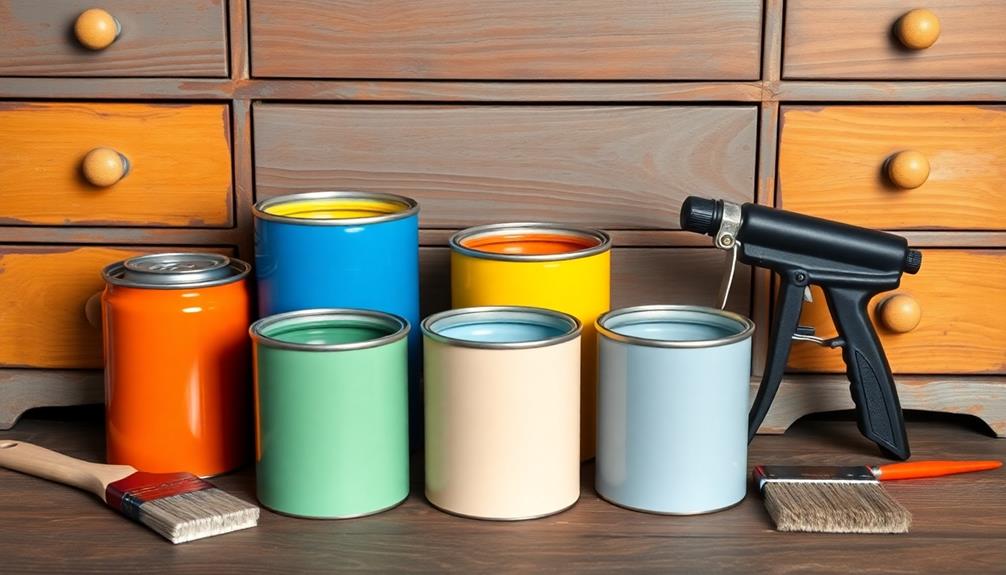
To achieve a stunning finish on your veneer furniture, selecting the right products is vital. Start with a high-quality chalk paint, like Dixie Belle, which provides excellent adhesion and a beautiful matte finish on veneer surfaces.
Before applying the chalk paint, use an oil-based primer such as Kilz. This primer enhances paint adhesion, especially on laminate surfaces, creating a durable base for your finish.
If you're dealing with tough finishes, consider using Citristrip for effective stripping before painting. This product makes preparation easier and guarantees a clean surface for your project.
Once you've painted your furniture, it's essential to protect your work with a reliable topcoat. For this, opt for polycrylic by Minwax, as it seals the painted surfaces and offers a smooth finish that can withstand wear and tear.
For an even more durable and long-lasting finish, you might choose Sherwin Williams paint products, like their Emerald Urethane Trim Enamel. This enamel is ideal for furniture applications, ensuring your piece not only looks great but also stands the test of time.
With these recommended products, you're well on your way to transforming your veneer furniture.
Frequently Asked Questions
What Kind of Paint Do You Use on Veneer Furniture?
For veneer furniture, you'll want to use chalk paint for its great adhesion and minimal prep. Water-based acrylics can work too, but make certain they're made for furniture to withstand wear and tear effectively. When painting veneer furniture, be sure to apply thin, even coats to avoid streaks and achieve a smooth finish. A protective topcoat is crucial to seal the paint and increase the durability of your piece. If you’re wondering how to paint outdoor furniture, make sure to choose paints specifically designed for exterior use, as they are formulated to handle the elements better.
Can You Paint Straight Onto Veneer?
You can absolutely paint straight onto veneer, but don't just plunge in! Proper prep is your secret weapon. Clean, sand if needed, and use a good primer to guarantee that fabulous finish you're dreaming of!
Can You Paint Over Veneer Without Sanding?
Yes, you can paint over veneer without sanding. Just clean the surface, use a high-quality primer, and apply your chosen paint. Two thin coats offer the best results, and finish with a protective topcoat for durability.
How Do You Paint Furniture With Fake Wood Veneer Finish?
You're transforming a surface that seems simple yet complex. Start by cleaning and lightly sanding the veneer. Apply primer, let it dry, then paint with thin coats, and seal it for lasting beauty. Enjoy the process!
Conclusion
Painting veneer furniture can transform dull pieces into stunning focal points, but it requires careful preparation and technique. While the thought of tackling a project like this might seem intimidating, the satisfaction of breathing new life into an old item is incredibly rewarding. Remember, each brushstroke can turn imperfections into art, making your furniture not just functional, but a conversation starter. Embrace the challenge, and you'll create something uniquely yours that blends practicality with beauty.
